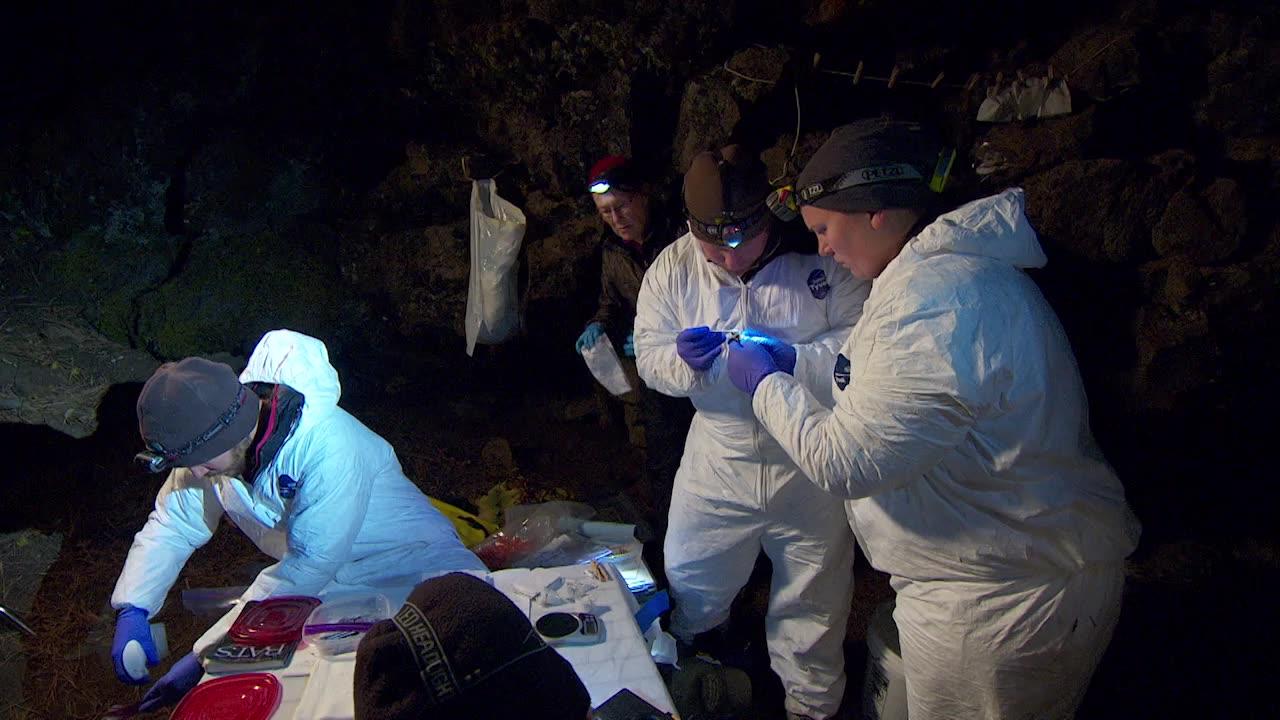
Researchers in eastern Oregon capture bats in nets to look for signs of white nose syndrome and document the health and size of the region’s bat populations.
Todd Sonflieth / OPB
A new study from the U.S. Geological Survey finds that the fungus that causes white-nose syndrome in bats can be spread much more readily than previously thought.
White nose syndrome has decimated bat populations east of the Mississippi River, but only last year appeared in the Pacific Northwest. The research suggests people and equipment can become contaminated with the fungus no matter what time of year they enter caves.
“It’s not just within the winter season when white nose is much more prevalent in the bat populations. But it needs to be considered at all times of year because there’s always going to be that potential to pick it up and move it,” says lead author Anne Ballmann, a wildlife disease specialists with the USGS National Wildlife Health Center.
This discovery provides insight into how and when the fungus can be spread.
“What that means out here is kind of unclear,” said Abby Tobin, white nose syndrome coordinator with the Washington Department of Fish and Wildlife.
Unlike bats in the Eastern U.S., Northwest bats largely don’t roost or hibernate in large colonies. They’re more dispersed on the landscape, making detection of the fungus even more challenging.
“It gives us a starting point at least. We can use the information to be conservative with management,” Tobin said.
This means making sure people who work with bats follow procedures to decontaminate their clothing and equipment to minimize the chance of transferring the fungus.
USGS researchers detected the fungus, Pseudogymnoascus destructans (Pd), on bats, the cave environment, in guano and on the clothes and equipment of researchers involved in the study.
Finding the fungus in the guano in the summer months holds particular promise to expand the ability to detect and monitor for white nose syndrome, Ballmann said.
“Bats when they’re active… they’re basically grooming the surface (fungus) that they’ve been exposed to in these cave sites, swallowing it, and it’s passing through their guano.” she said. “So when people are interested in looking for exposure of Pd on bats during their periods of activity… they should definitely be including guano.”
The first detection of white-nose syndrome in the Pacific Northwest was in 2016 in the foothills east of Seattle. According to the Washington Department of Fish and Wildlife, three species of bats have now tested positive for the fungus, but only two have showed signs of white nose syndrome.
The latest sick bat was found in April of this year. The fungus has been detected in small quantities at one known bat roosting site in Western Washington.
It’s not known how white nose syndrome was transmitted to the Pacific Northwest, but humans traveling between caves and other roost sites are among the suspected culprits.
Other than Washington, all known cases of white nose syndrome in the United States are located no further west than Texas.
